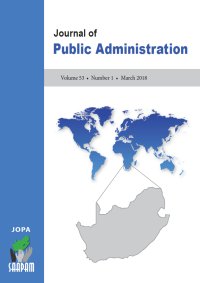
In contemporary times, most governments are condemned to function under conditions of severe financial constraint, exacerbated by global financial markets that are becoming increasingly volatile and contagious in nature. Thus, over and above exhaustible efforts of governments to raise increasingly evasive financial capital for development, other innovative measures need to be explored. Community participation is one such measure; and integrated development planning another. This article aims at assessing the extent to which community participation (CP) and Integrated Development Planning (IDP) processes may contribute to improved development outcomes in local government in South Africa. Aganang Local Municipality (in Limpopo, in South Africa) is taken as the case study. The focus of the study is not on proving the relationship between participation and development, as this is assumed to be common knowledge that is widely accepted in